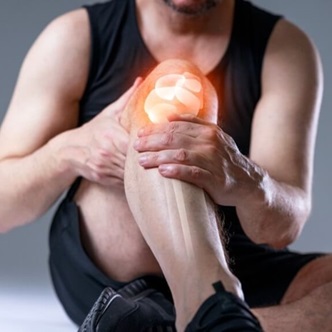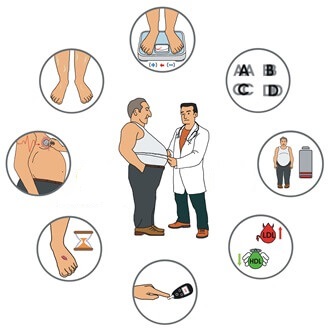Whether it is a stroke, herniated disc, sciatica, chronic fatigue, multiple sclerosis, or Parkinson’s disease, patients need complex services of neurological medical recovery, neuromotor recovery, psychological counseling, speech therapy, and occupational therapy.
The Centrokinetic Clinic responds to this through the Department dedicated to Neurological Diseases. It covers an area of 120 square meters and is equipped with the latest equipment, which meets the needs of our patients and is necessary for optimal treatment. Our physiotherapists are licensed and overspecialized in physical therapy and special motor skills, having numerous courses, among which we mention:
- ERGON technical course
- Kinesio taping
- Flossing band
- Dynamic tape
- Yumeiho Therapy Course
- Aquashape Fitness Scandinavia Workshop
- Kinesio taping course Calarco Method
- Osteopathy courses
- Manual Therapy Courses
What is neuromotor recovery?
Here are some of the most effective therapies used in neurological recovery, all available at Centrokinetic:
- Physical therapy, which includes exercises to tone the back muscles, to get a correct position of the spine, but also to relieve pain and stabilize the spine in the long run.
- Physiotherapy addresses diseases that affect the muscles, nerves, or joints. In the clinic, the treatments are done with high-performance equipment from Zimmer: Termo Tecar devices, Soleo range with ultrasound and electrotherapy with vacuum, cryotherapy through the Cryo6 device, Triton elongation table, Opto Pro. Detailed information is available here.
- Manual therapy is performed by applying a manual force, determined precisely and specifically at the joints, connective tissues, or skeletal muscles. Manual therapy aims to improve the mobility of restricted areas.
- ERGON therapy is a manual therapy that comprises the assisted mobilization of soft tissues with the help of a specialized tool. ERGON is an innovative therapy for static and dynamic mobilization of soft tissues with the help of a medical instrument. The role of this therapy is to locate and treat areas that have fibrosis, chronic inflammation, or degeneration
- Elongations are mainly used to treat herniated discs and represent a series of axial tractions of different regions of the spine to separate the vertebrae from each other. This reduces the pressure on the intervertebral disc on the nerves, eliminating the constant pain that often becomes chronic. You can also stretch your ligaments and tendons, reduce inflammation, improve circulation and blood flow to tissues.
- Electrotherapy stimulates the nerves of the affected muscles, encouraging the body to release analgesic chemicals to help heal it. Applying electrotherapy to the buttocks can help reduce pain and reduce muscle spasm.
- Kinesiology tape therapy - also called Kinesio taping - is used to reduce pressure and pain, while helping the healing process by increasing circulation in the affected area. Elimination of pain is felt immediately, and the body gradually returns to a healthy posture and normal function.
Most of the times, the patient's evaluation is complex, multidisciplinary, considering the systemic, generalized character of most rheumatological diseases, that is why Centrokinetic has experienced doctors:
- Rheumatologist: Dr. Allizi Khalid and Dr. Oana Olteanu
- Recovery doctors: Dr. Tache Georgiana, Dr. Adina Matei, Dr. Renata Czego and Dr. Edis Mustafa
- Orthopedic doctors: Dr. Andrei Bogdan, Dr. Vlad Gican, and Dr. Crintea Alexandru
- Radiologists: Dr. Pantu Cosmin and Dr. Ghiea Sorin
- Neurologists: Dr. Rotaru Bogdan, Dr. Simona Man and Dr. Simion Laurentiu
- Doctor for nutrition and metabolism diseases: Dr. Elian Viviana
About the neurorehabilitation department
The conditions addressed within the Centrokinetic neurorehabilitation department are:
Disc herniation is a relatively common condition that can occur anywhere along the spine, but most often affects the lower back or neck. When a disc is damaged, it may swell or break. Centrokinetic specialists recommend a treatment that combines physiotherapy procedures, manual therapy, therapeutic massage, physical therapy, and spinal decompression therapy.
One of the most effective non-surgical therapies for treating a herniated disc is one that uses the Triton DTS elongation table, which helps reposition the herniated disc back to a normal physiological position. It also promotes the intake of fluids, oxygen, and other substances needed to heal the spinal disc and surrounding tissues. Decompression stimulates tissue repair and inhibits the leakage of internal spinal disc material (pulpal nucleus). You can learn more of this in the article about the treatment of disc herniation.
Ankylosing spondylitis is a form of arthritis with a long-term (chronic) evolution and, most often, affects the spine. The treatment has the following priorities: physiotherapy to reduce inflammation, medical-gymnastics to reduce pain and stiffness, and to prevent the aggravation of the disease, to maintain normal daily activity.
Cervical spondylosis is a degenerative condition of the cervical spine and affects the vertebral bodies and intervertebral discs in the neck (such as cervical disc herniation), as well as the contents of the spinal canal (nerve roots and/or spinal cord). Symptoms of cervical spondylosis include neck pain, which can radiate to the shoulders and upper chest, stiffness in the intervertebral joints, headaches, numbness, and tingling in the arms. The treatment consists of various exercises to maintain good mobility in the spine, elongations to decompress the intervertebral space, and therapeutic massage to relax muscles around the spine.
Vertebral stenosis represents the abnormal narrowing of the medullary canal. While narrowing can occur in different parts of the spine, the sensations of compression of the nerve or spinal cord are often similar and are also similar to the symptoms of a herniated disc. The optimal non-surgical treatment for spinal stenosis is the exercise program performed under the supervision of a physiotherapist.
Sciatica describes pain in the lower limb - and possibly other symptoms such as tingling, numbness, or weakness - that originate in the lower spine and are transmitted through the buttocks along the sciatic nerve. Because sciatica affects the lower back, it is called lumbosciatica. Treatments are usually combined, each fulfilling a specific role. Manual therapy helps to restore the mobility of rigid joints and reduce muscle tension, and spinal decompression therapy has the role of decompressing the vertebrae, leaving the intervertebral disc to hydrate.
Parkinson's disease is an idiopathic, familial neurodegenerative disease. Physical therapy is particularly useful in treatment because it contributes to preserving motor functions and maintaining the patient's autonomy for as long as possible. In patients with Parkinson's, physical therapy is applied to both the limbs and the spine (with an emphasis on the cervical spine), using passive and active techniques.
Alzheimer’s disease is a progressive, neurodegenerative disease that occurs when nerve cells in the brain begin to die. Physical therapy contributes to improving the patient’s life through exercises that act on both cognitive and motor function. Even if it does not eliminate the problem, a correctly conceived and performed exercise program has a significant positive effect in delaying the onset of dementia or depression associated with the disease.
Stroke is the No. 1 cause of mortality in adults in Romania, at the same level as coronary heart disease, qualifying as a public health problem. Medical recovery plays an important role in this condition, having several purposes, from the prevention of another stroke to the treatment of medical complications, in order to improve the patient’s life.
Chronic fatigue is manifested by severe exhaustion that prevents the performance of normal activities and lasts for at least 6 months, without being relieved by rest. Symptoms can occur after the patient suffers from a disease such as mononucleosis or the flu, but also after an unusual period of stress. A moderate exercise program, associated with an improved sleep rhythm, contributes to a significant improvement in the patient’s condition.
Once you make an appointment at Centrokinetic, the first step to recovery is to assess your health, physical and mental potential, and to establish the level of involvement in rehabilitation programs. Taking the personal options of each patient into account, we choose the optimal treatment.
Prices
You can find here a detailed list of the prices of individual services. But any correct recovery process is based on a mixed plan of therapies and procedures, customized according to the condition, stage of the condition, patient profile, and other objective medical factors. As a result, in order to configure a treatment plan, with the therapies involved and the prices related to the plan, please make an appointment here for an initial consultation.
About Centrokinetic
Centrokinetic clinic offers all services necessary for a complete rehabilitation process, from the first consultation to the medical specialist to establish the correct diagnosis, to treatment and recovery.
Centrokinetic is the place where you will find clear answers and solutions for your motricity problems. The clinic is dedicated to osteoarticular conditions and is divided into the following departments:
- Orthopedics, a department composed of an extremely experienced team of orthopedic doctors, led by Dr. Andrei Ioan Bogdan, primary care physician in orthopedics-traumatology, with surgical activity at Medlife Orthopedic Hospital, specialized in sports traumatology and ankle and foot surgery.
- Pediatric orthopedics, where children's sports conditions are treated (ligament and meniscus injuries), spinal deformities (scoliosis, kyphosis, hyperlordosis) and those of the feet (hallux valgus, hallux rigidus, equine larynx, flat valgus, hollow foot).
- Neurology, which has an ultra-performing department, where consultations, electroencephalograms (EEG) and electromyography (EMG) are performed.
- Medical recovery for adults and children, department specialized in the recovery of performance athletes, in spinal disorders, in the recovery of children with neurological and traumatic diseases. Our experience is extremely rich, treating over 5000 performance athletes.
- Medical imaging, the clinic being equipped with ultrasound and MRI, high-performance devices dedicated to musculoskeletal disorders, and complemented by an experienced team of radiologists: Dr. Sorin Ghiea and Dr. Cosmin Pantu, specialized in musculoskeletal imaging.
Find the latest news by following the Facebook, Instagram and YouTube accounts of the Centrokinetic clinic.

MAKE AN APPOINTMENT
CONTACT US
MAKE AN APPOINTMENT
FOR AN EXAMINATION
See here how you can make an appointment and the location of our clinics.
MAKE AN APPOINTMENT




































































































































